[2024] Shopify vs Wix: Best Store Builder for Ecommerce
If you’re serious about ecommerce, you need a serious ecommerce platform for your store.
Ideally, one that is cost-effective when you start up but that you can scale up with over time. One that helps you effectively manage the back-end of your business while also providing a slick user experience and helping you promote your products and services.
Two of the best-known ecommerce platforms are Shopify and Wix. Each provides a simple, user-friendly way for aspiring store owners without great technical expertise to set up attractive, robust ecommerce stores and get selling.
But how do they compare in what they offer merchants? What are their main strengths and weaknesses and how do their pricing and features compare?
Here we take a look at what Shopify and Wix offer so that you can decide for yourself which one suits you best.
Shopify overview

Shopify is a Canadian-based company that has become a true ecommerce powerhouse in recent years.
Its flexible and user-friendly platform was specifically created for ecommerce, catering to startups and smaller stores as well as major international brands handling thousands of products, such as Heinz, Fitbit Gymshark, Kylie Cosmetics, Chubbies and more.
Standard Shopify plans are affordable for most, while Shopify Plus is its enterprise offering that makes it relatively straightforward to upgrade and take your ecommerce business to the next level. The Shopify support team is well-respected and can help facilitate a smooth migration from other platforms.
Main strengths
- Fast page-load speeds
- Easy to use drag-and-drop page builder
- Many themes/templates available
- A good option for dropshipping
- A huge ecosystem of apps available
- Great support
Main weaknesses
- SEO performance
- Content marketing features are not the best
- Checkout not customizable
- App fees may increase costs
Wix overview
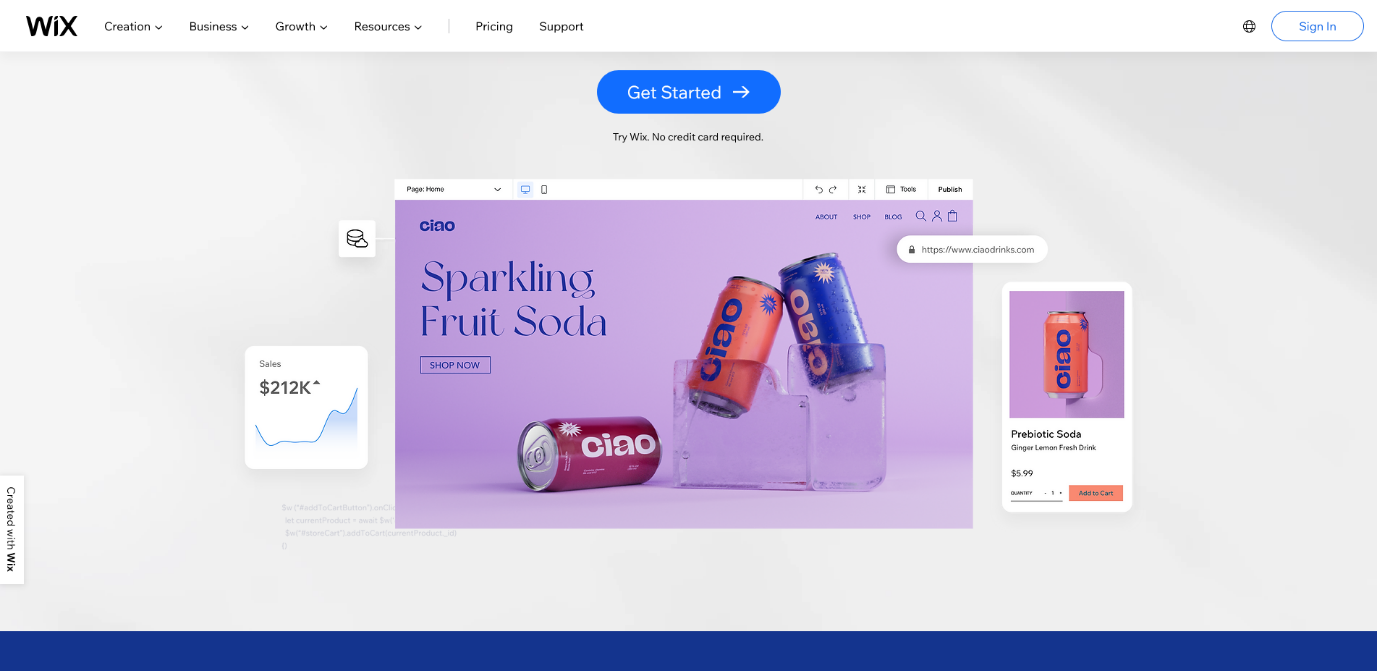
Wix was founded in Israel around the same time as Shopify (2006) and the platform has also experienced phenomenal growth over the years.
Unlike Shopify, it was not designed specifically for ecommerce but for any small or medium-sized business needing a website without spending huge amounts on technical resources. It now supports over 200 million users worldwide and has over 5,000 employees worldwide.
The platform offers beginner-friendly ecommerce features and content offerings that are mainly geared towards small online stores with less than 300 products.
Main strengths
- Easy to use drag-and-drop editor
- Many free themes/templates available (more than Shopify)
- Marketing automation tools available
- Easy to learn – many tutorials provided
- Works with multiple payment gateways
Main weaknesses
- Platform not geared towards ecommerce
- Tight storage and video limits
- Poor with upselling capabilities
- Fewer apps than Shopify
- SEO performance is not the best
Shopify vs Wix: What do you get for your money?
Both Shopify and Wix offer several types of paid plans aimed at small and growing stores and, while both also provide enterprise services, Shopify’s is much more established than the Wix offering.
Let’s take a look at what you get for your money from the Shopify and Wix plans…
Shopify pricing
Few Shopify advocates would claim that the platform is the cheapest around. But, as we all know, price isn’t everything in ecommerce.
The platform has three plans ranging from $29/month for the Basic plan up to $299/month for the Advanced plan:

There is no free plan but there is a 14-day free trial. Paying upfront for 12 months will result in a 10 percent discount (20 percent discount for 24 months’ payment upfront).
This is what the $29/month Basic plan, the $79/month Shopify plan, and the $299/month Advanced plan from Shopify include:

Note that you may see a Shopify Lite plan for $9 per month but you cannot actually build a store with it (only add BUY buttons to Facebook or WordPress) – so it’s not much use if you’re setting up an ecommerce store.
As you can see with the plan overview, all plans come with an SSL certificate, a blog, unlimited products, fraud analysis, and Shopify POS Lite.
However, you will need more than the Basic plan if you want to:
- Sell internationally
- Operate with more than two staff accounts
- Have more than four inventory locations
- Receive reports
- Use third-party calculated shipping rates
On top of the basic pricing shown, there are transaction fees (credit card or debit card rates or a percentage transaction fee if not using Shopify Payments), which are further discussed below.
There are also fees payable to app providers if you choose to use one of the many paid third-party apps that integrate with Shopify. These are often used for improving the marketing features (like SEO, reviews, or email marketing) or back-end processes (like inventory or accounting) in your store.
For enterprise customers, the starting price point for Shopify Plus is $2,000/month so this option is for high-volume stores, mainly established brands.

Wix pricing
The Wix platform is aimed at small businesses (not just ecommerce businesses but all small businesses) and this is reflected in its lower price points than Shopify.
It provides two different categories of pricing – one aimed at business professionals looking for a very basic website and another at slightly larger businesses and ecommerce customers.
Let’s take a quick look at the website plans for professionals…
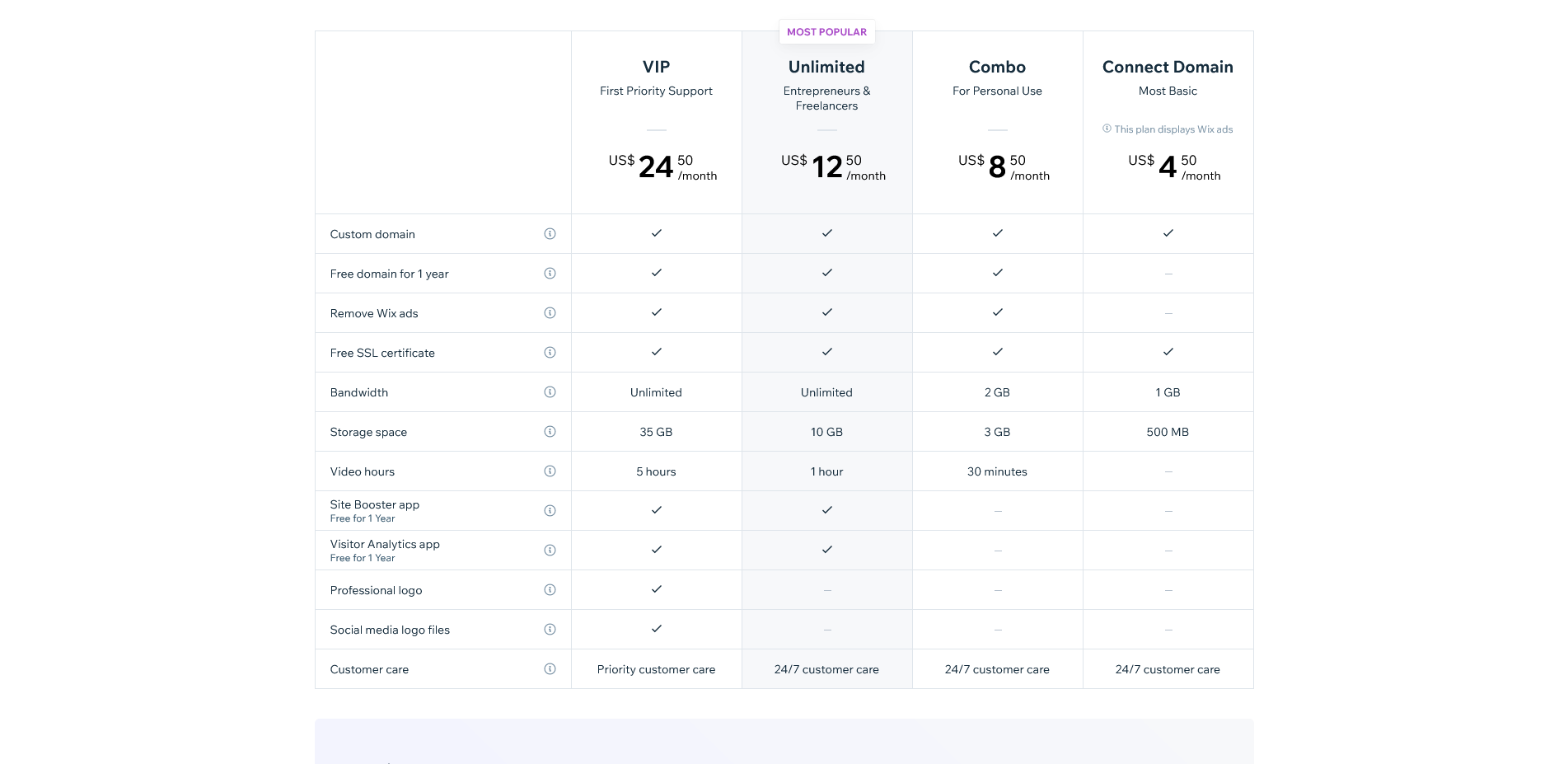
Ecommerce store owners will be more interested in the business plans as follows:

There are three different plans for ecommerce businesses:
- Business Basic: $17/month, including 20GB storage space, 5 hours of video and 24/7 support
- Business Unlimited: $25/month, including 35GB storage space and 10 hours of video and 24/7 support
- Business VIP: $35/month, including 50 GB storage space, unlimited video, customized reports and priority support
These monthly fees are obviously lower than Shopify, and they have even been reduced in recent months. If you just need a very basic store, you can be up and running for $17/month, which is within most store owners’ budgets.
However, for ecommerce stores, there are important limits and restrictions to be aware of depending on the plan you select:
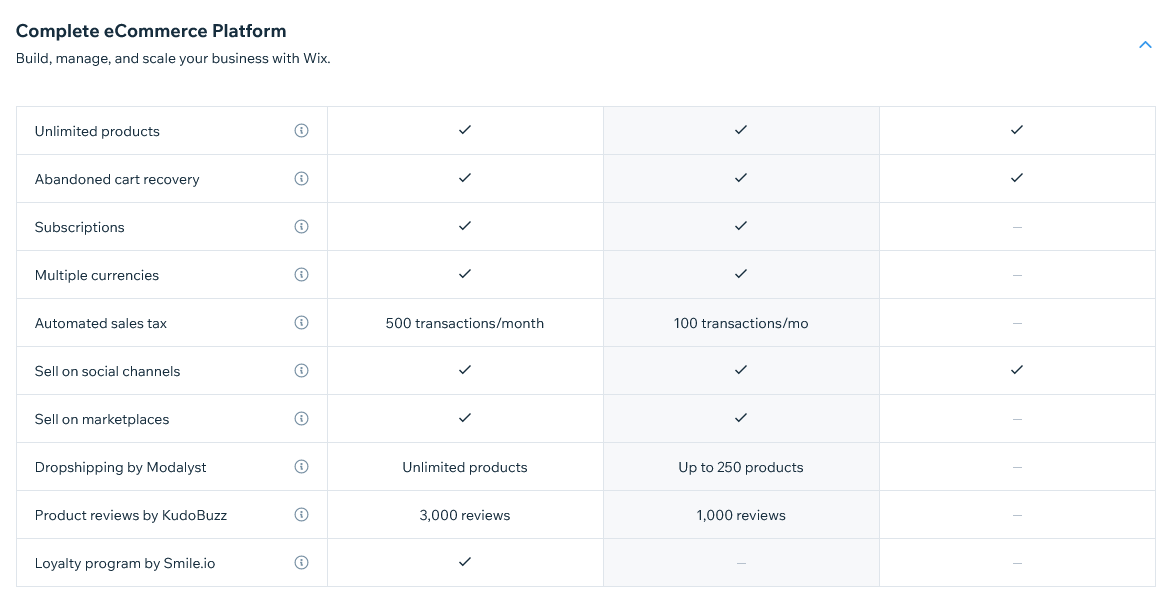
Wix does offer some of the lowest monthly pricing of all major ecommerce platforms. The major caveat is that the Wix platform is not an ecommerce-only platform like Shopify.
Wix’s scalability is considerably more limited than Shopify’s and it does not have the rich ecosystem of apps to support additional functionality, marketing, user experience and so on.
It does offer an enterprise custom package, with pricing starting at $500+/month but it is unclear how many clients have upgraded to this. Wix enterprise clients seem few and far between.
Shopify vs Wix: Payment gateways and transaction fees
Shopify Payments and Wix Payments are the respective names of the payment gateways provided by each platform.
In all, Shopify supports more than 100 payment methods outside of its Payments offering, indicating its greater international reach and ecommerce-centric approach.
Wix supports fewer gateways but does support most of the major ones like PayPal, Stripe, Square, Affirm, Afterpay, Klarna, etc.
Whichever platform you use and whichever payment option(s) you decide on, there will be additional card processing and transaction fees to pay on top of the monthly charges.
Here’s what Shopify will charge you…
Shopify Basic plan:
- 2.9% + 30 cents transaction fee for each online credit card transaction
- 2.7% + 30 cents on any in-person transactions
- 2% if not using Shopify Payments
Shopify plan:
- 2.6% + 30 cents transaction fee for each online credit card transaction
- 2.5% + 30 cents on any in-person transactions
- 1% if not using Shopify Payments
Shopify Advanced plan
- 2.4% + 30 cents transaction fee for each online credit card transaction or in-person transactions
- 0.5% if not using Shopify Payments
Wix charges transaction fees based on your payment method and location. Following are some examples:
- USA: 2.9% of the transaction amount + 0.30 USD (2.6% for in-person POS transactions)
- EU: 1.9% of the transaction amount + 0.30 EUR
- United Kingdom: 2.1% of the transaction amount + 0.20 GBP
Shopify vs Wix: Apps and integrations
Wix provides access to around 300 ecommerce apps via its Wix AppMarket. The Shopify Appstore provides access to over 6,000 apps.
We might say that Shopify is essentially designed to be used with apps. These apps help you with store design, marketing, sourcing and selling products, or adding functionality that adds to the user experience (such as live chat or more shipping options).
Most Shopify merchants are aware of the app store and actively use it to download both free and paid apps. which range in price from $5/month up to $250/month.
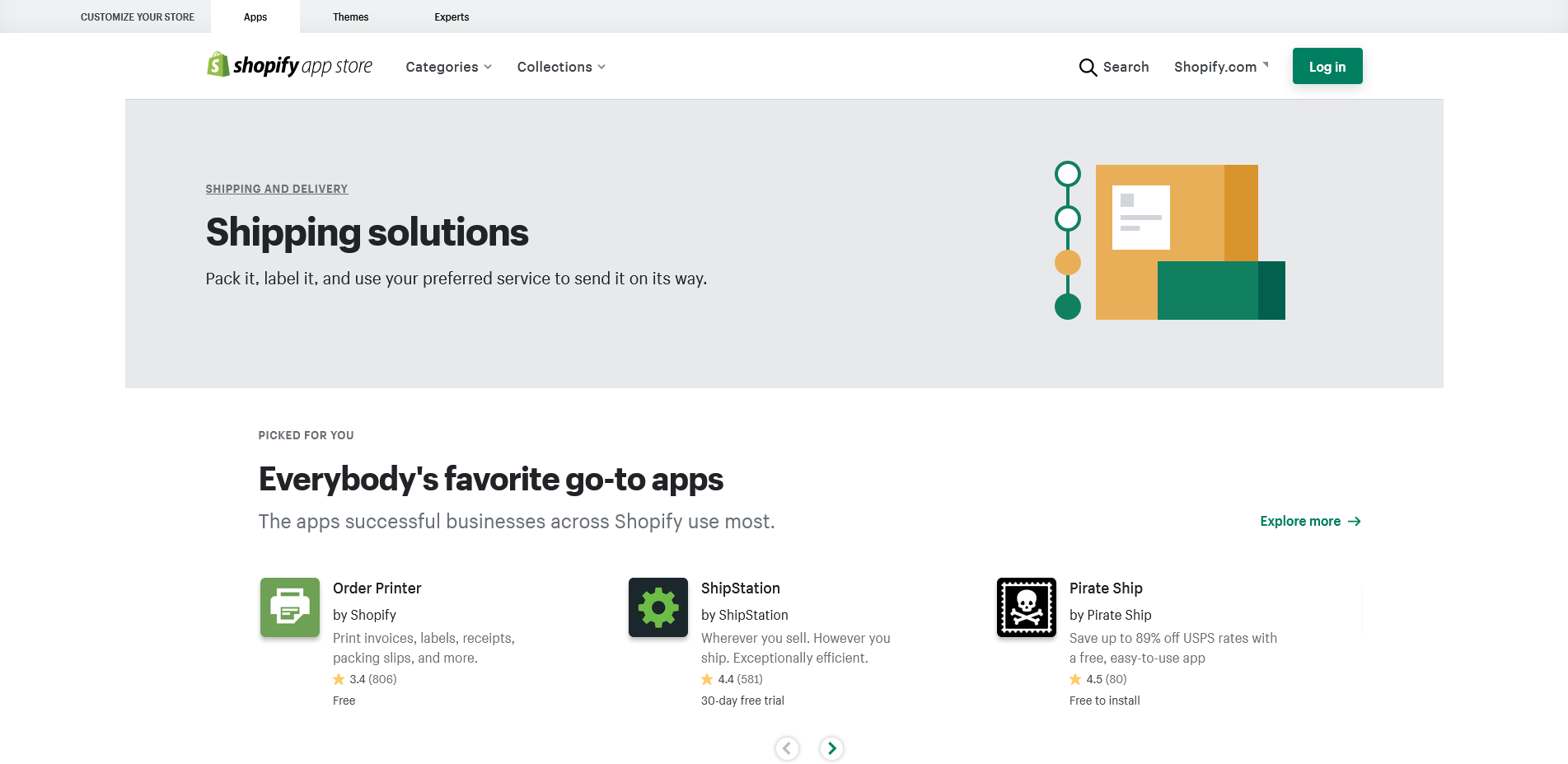
It’s fair to say that fewer Wix merchants download apps to customize their stores. The paid apps are available from around $10 to $100 a month.
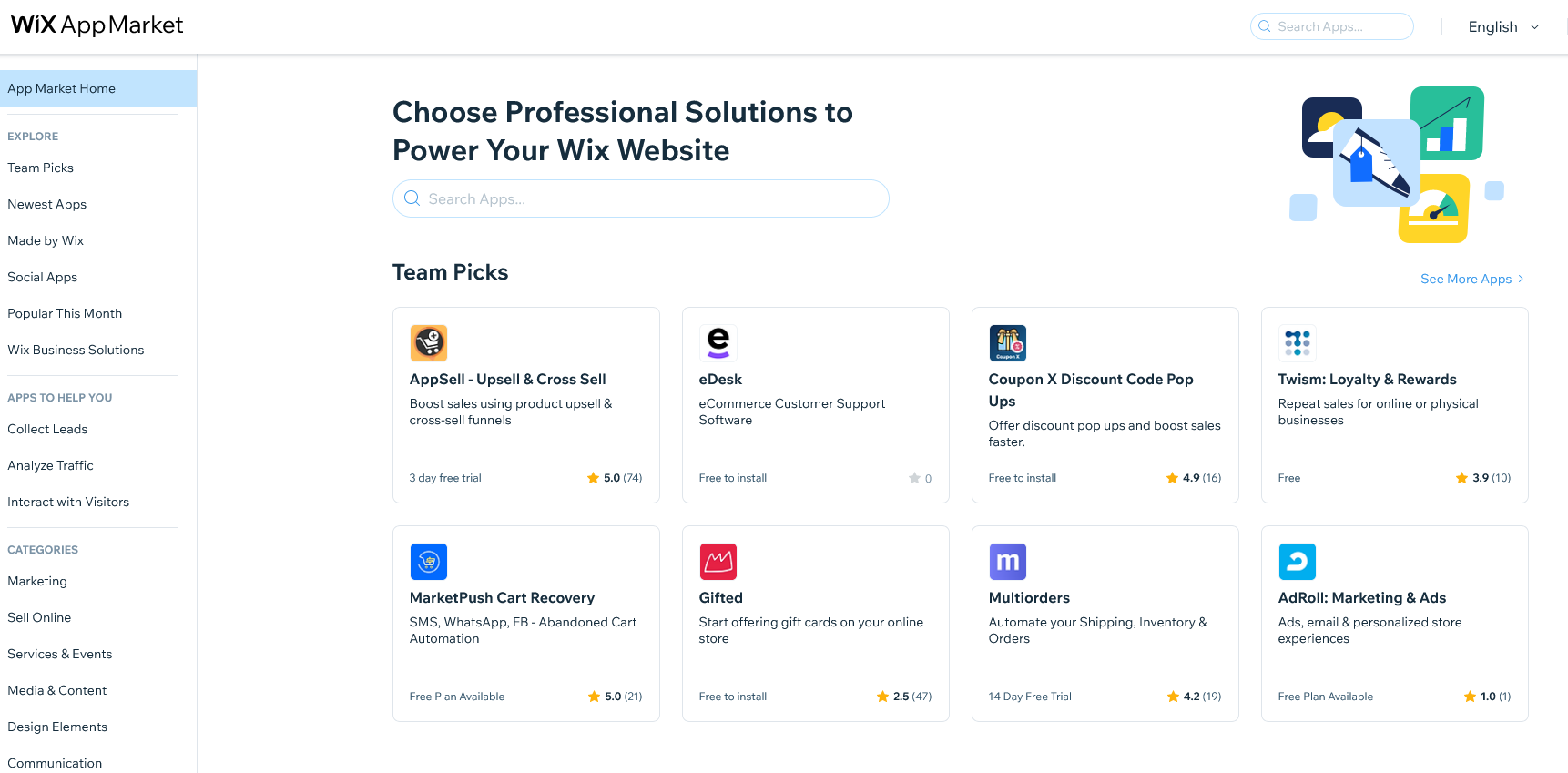
Shopify vs Wix: Speed, SEO and mobile performance
Shopify is built for ecommerce transactions and at its peak, the Shopify Plus platform has comfortably processed 10,000 transactions per minute.
Even with the non-enterprise plans, Shopify’s performance is consistently well-rated amongst users. Page load speed is fast and snappy. Shopify generally outperforms most of its rivals in this respect.
Wix may lag slightly on speed and some reviews have criticized the platform in this respect. Speed is important not only for improving the user experience but is also a key Google ranking factor. So, slow speeds may harm your rankings.
Talking about SEO, both Wix and Shopify offer built-in SEO tools, designed to improve your search rankings (e.g., tools to edit metadata, URLs, image ALT texts, etc.). Shopify pages generally receive more search traffic than Wix sites but Wix provides more in-built assistance with keyword selection.
Many merchants use SEO apps to improve their rankings rather than relying simply on the in-built tools of either Shopify or Wix.
As for mobile performance, reviewers claim that Wix fares slightly better than Shopify in this respect but Shopify has taken steps in recent years to improve its mobile-first themes. All themes/templates provided by Wix and Shopify are mobile responsive but Wix probably has the lead on this.
Final verdict: Shopify or Wix?
The bottom line when choosing between Shopify and Wix may be whether you want an ecommerce platform that will save you money in the here and now or one that will grow with you and allow you to scale up as you sell an unlimited number of products internationally.
If the former, you might choose Wix. It’s great value, for sure. Wix will also help you develop a content-heavy store without any coding knowledge.
Shopify is more geared for selling and provides a more sophisticated ecommerce platform that is accustomed to the needs of large-volume ecommerce stores and growing businesses.
Shopify allows for stores with unlimited products and, as ecommerce grows internationally, the platform provides more tools to take advantage of cross-border selling opportunities (multilingual and currency support as well as support for upselling and cross-selling).
The vast array of Shopify-ready apps available can also help you customize Shopify so that you can manage and market your store according to your goals and preferences— without needing any coding expertise.
In summary, Wix is an excellent website builder that also does ecommerce. Shopify is a more complete ecommerce solution that is focused on growing online stores that want to sell more.
